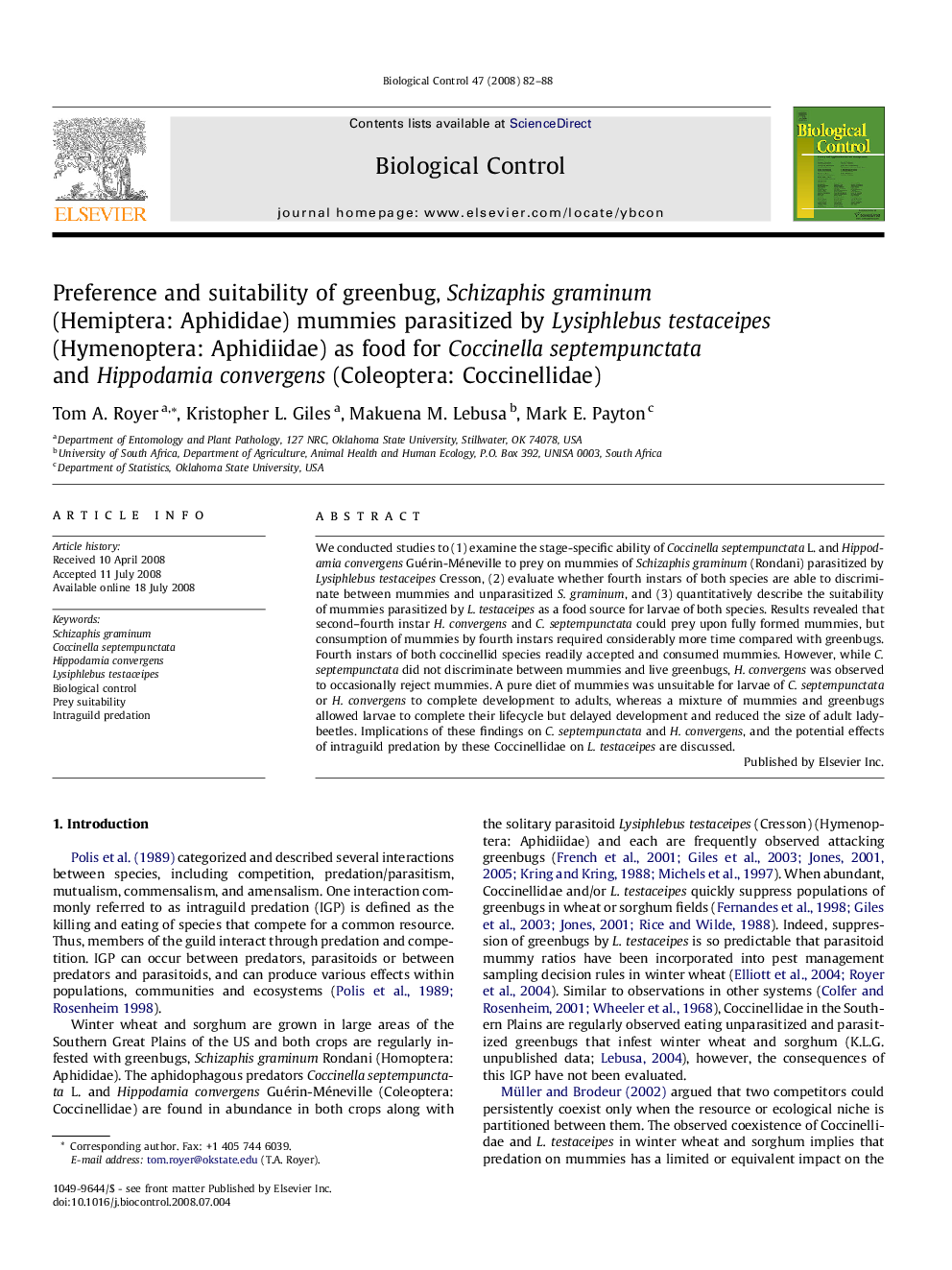| Article ID | Journal | Published Year | Pages | File Type |
|---|---|---|---|---|
| 4504775 | Biological Control | 2008 | 7 Pages |
We conducted studies to (1) examine the stage-specific ability of Coccinella septempunctata L. and Hippodamia convergens Guérin-Méneville to prey on mummies of Schizaphis graminum (Rondani) parasitized by Lysiphlebus testaceipes Cresson, (2) evaluate whether fourth instars of both species are able to discriminate between mummies and unparasitized S. graminum, and (3) quantitatively describe the suitability of mummies parasitized by L. testaceipes as a food source for larvae of both species. Results revealed that second–fourth instar H. convergens and C. septempunctata could prey upon fully formed mummies, but consumption of mummies by fourth instars required considerably more time compared with greenbugs. Fourth instars of both coccinellid species readily accepted and consumed mummies. However, while C. septempunctata did not discriminate between mummies and live greenbugs, H. convergens was observed to occasionally reject mummies. A pure diet of mummies was unsuitable for larvae of C. septempunctata or H. convergens to complete development to adults, whereas a mixture of mummies and greenbugs allowed larvae to complete their lifecycle but delayed development and reduced the size of adult ladybeetles. Implications of these findings on C. septempunctata and H. convergens, and the potential effects of intraguild predation by these Coccinellidae on L. testaceipes are discussed.
